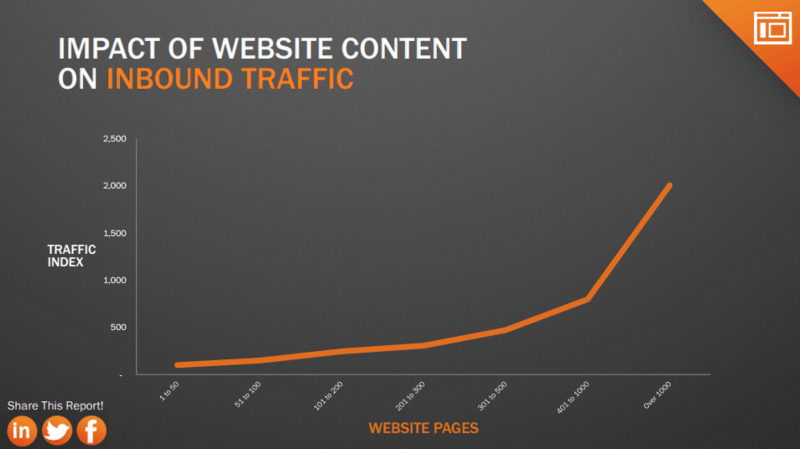I know; more harping on about content creation. But, many businesses still don’t see the value in adding more content or struggle to come up with new content creation ideas. So, in order to churn out the articles, they may sacrifice quality for quantity.
According to the B2B Content Marketing report, conducted by CMI and MarketingProfs, 33% of B2B marketing budgets are now dedicated toward content creation. For 2013, this is expected to increase 54%. So…how’s your plan coming along?
The following data, collected by HubSpot on its 7,000+ B2B/B2C customers, helps reinforce the need to invest in content by demonstrating the impact of webpages, landing pages, blogging and social reach. Today I want to look specifically at webpages (in the report, this is referred to as website content). To clarify, a webpage tends be an informative page on a website – for example, a page for products, services, FAQs or blog posts.

So, What Does This Really Show?
If you look at this graph and say, “I need to create more pages of content”, then all I can say is good luck! Using only this data, I could see how one would come to this conclusion. But, there are other factors that need to be considered to acheive success by increasing your content output.
Improving Your Approach to Content and SEO
Everyday I come across website owners that write content or design their website for search engines, rather than for the use of humans.
This does not work.
“Spammy” pages are decreasing (although not quick enough for most people’s liking), and sites that are generating traffic and increasing rankings are more visually appealing, easier to navigate, contain high quality content, and are recent enough to stay relevant.
Not only are the search engine algorithm updates and rankings reflecting this – but if your content is what the visitor is looking for – then good content results in social sharing, customer retention, customer acquisition, branding, leads and ultimately sales. So, pay attention to the quality of each page by only supplying valuable, relevant and current information to your audience. Focus on creating one (quality) page at a time.
For those people who don’t have the resources to generate 100’s of articles – content syndication is an efficient way to deliver quality messaging to your audience. This allows websites to display fresh, relevant and consistent content to prospects, without sacrificing essential on-page optimization elements or rankings.
So what are your content marketing plans for 2013? What have you done to improve your content output recently? Let us know in the comments section below.
Alex Pethick
Brit living in Raleigh, NC. Football (soccer) & boxing fan. Health nut. Oh, and I manage Zift's digital marketing presence.




